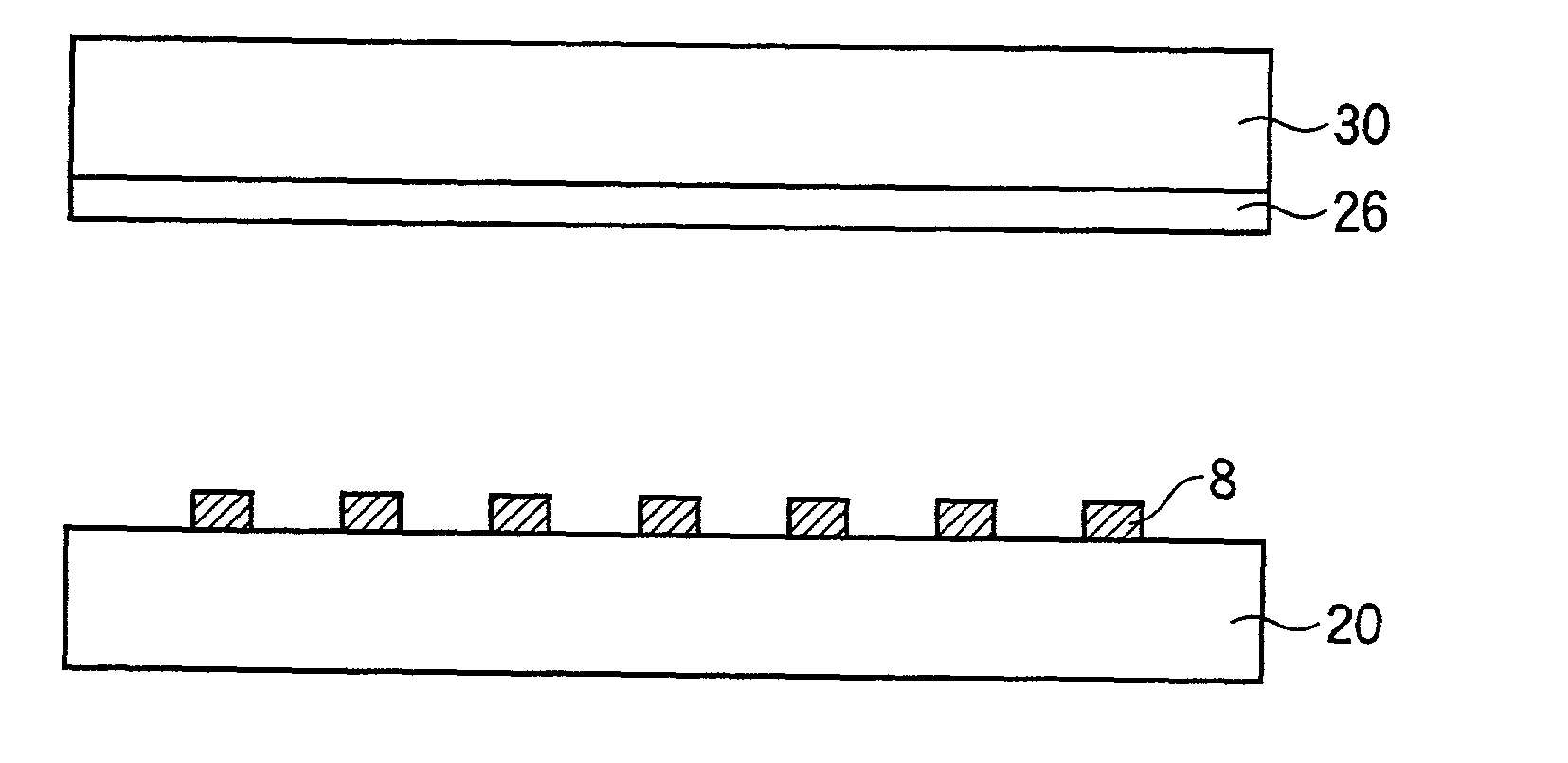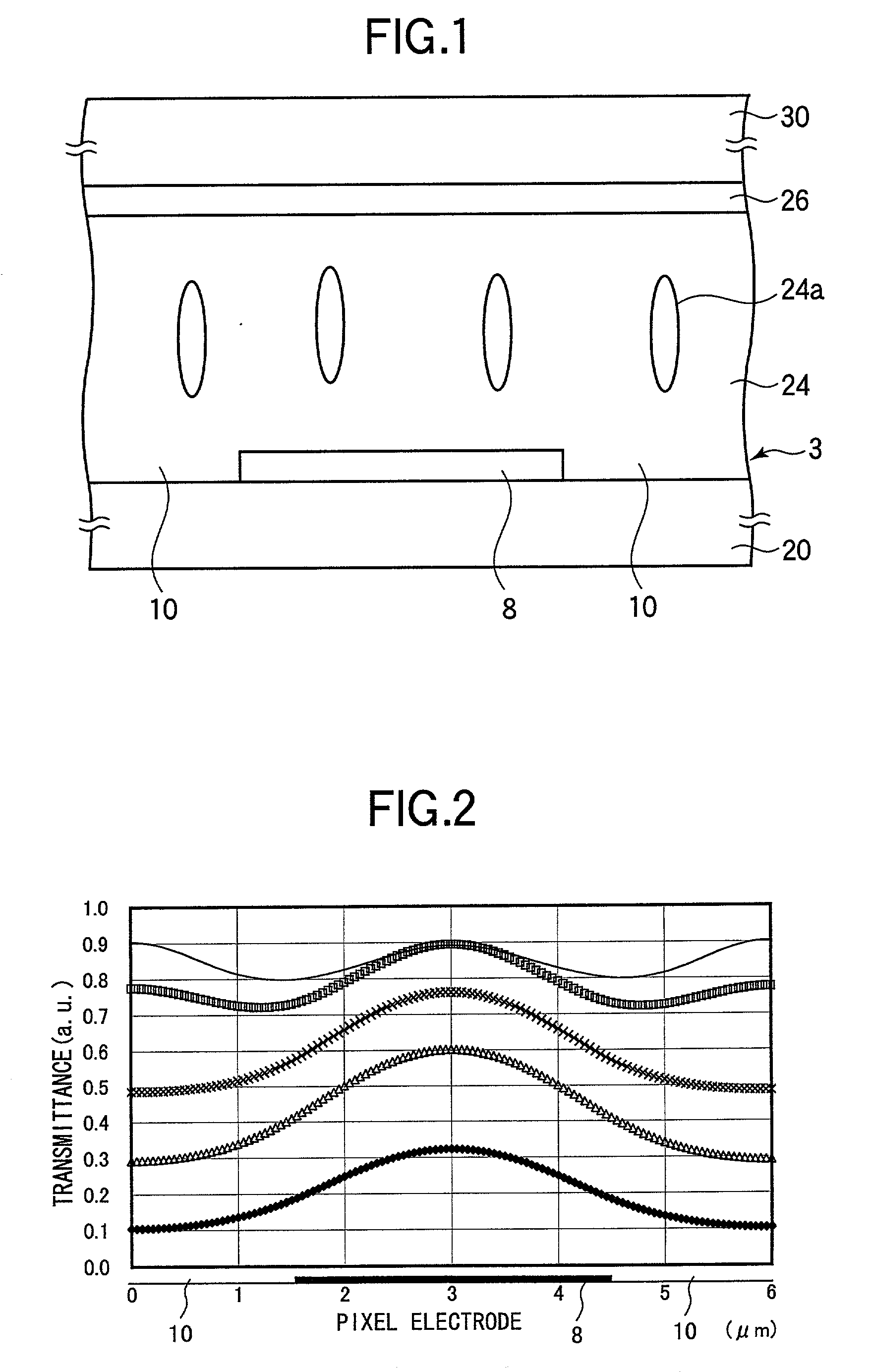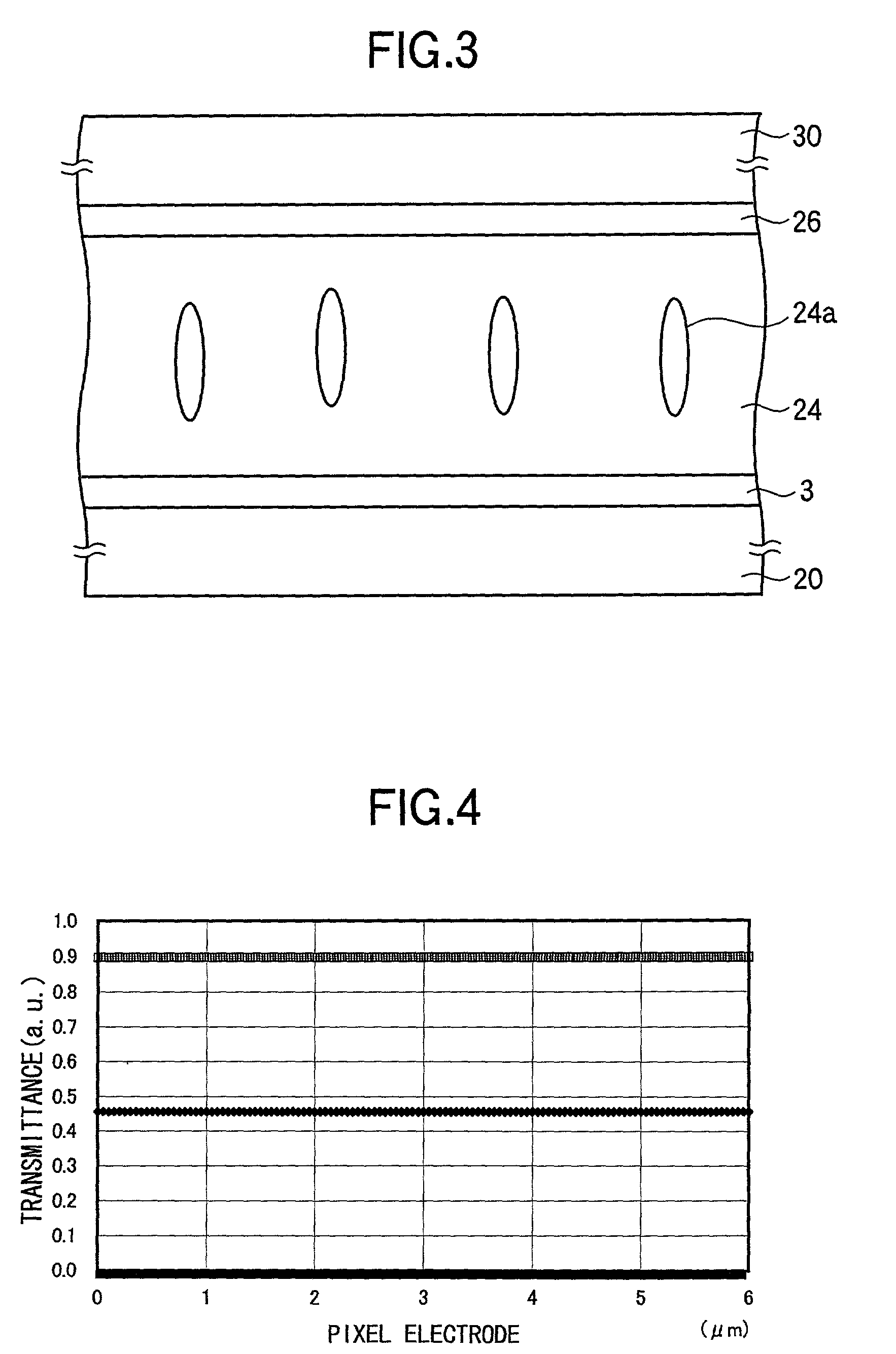Substrate for liquid crystal display and liquid crystal display utilizing the same
a technology of liquid crystal display and substrate, which is applied in the direction of liquid crystal compositions, instruments, chemistry apparatus and processes, etc., can solve the problems of polymer fixation method, low response speed, and dark appearan
- Summary
- Abstract
- Description
- Claims
- Application Information
AI Technical Summary
Benefits of technology
Problems solved by technology
Method used
Image
Examples
embodiment 5-2
[0163] A diacrylate monomer having a molecular weight of about 350 was added with 5% polymerization initiator by weight, the initiator having a molecular weight of about 260. A polymer-fixed LCD was fabricated using a liquid crystal material obtained by mixing a liquid crystal composition having an average molecular weight of about 350 with the diacrylate monomer including the polymerization initiator in a quantity that was 0.3% by weight. The image sticking rate of the LCD was 5% after display for 48 hours. In the present embodiment, the dose of ultraviolet required for achieving a predetermined tilt angle was one-tenth the dose in Embodiment 5-1.
embodiment 5-3
[0165] A polymer-fixed type LCD was fabricated using a liquid crystal material obtained by mixing a liquid crystal composition having an average molecular weight of about 350 with 3% diacrylate monomer by weight, the diacrylate monomer having a molecular weight of about 350. The LCD had stable alignment after being annealed for two hours at 120.degree. C.
Sixth Mode for Carrying Out the Invention
[0166] A liquid crystal display in a sixth mode for carrying out the invention will now be described with reference to FIGS. 35 through 43. Polymer-stabilized liquid crystal panel sutilizing an amorphous TN liquid crystal (Japanese patent publication No. 148122 / 1994) or a ferroelectric liquid crystal (SID '96 Digest, p.699)have been reported. The related art will now be described with reference to an amorphous TN liquid crystal by way of example. A liquid crystal including a predetermined chiral material is added with a diacrylate resin, and the liquid crystal is injected into a vacant panel....
embodiment 6-1
[0168] FIG. 35 shows a configuration of a display electrode and a common electrode of a related art IPS-LCD. Similarly to the TN method, a rubbing process is required to implement the IPS method in order to align a liquid crystal horizontally. A horizontal alignment film (e.g., JALS-1054 manufactured by Japan Synthetic Resin Co., Ltd.) is used as an aligning material to provide an initial alignment that has an angle to an electric field, thereby causing a deformation of the alignment easily when a voltage is applied and causing the deformation in a uniform quantity. Although an IPS-LCD is characterized by a wide viewing angle even in a mono-domain structure (in which there is one domain having a single alignment in a pixel), it is necessary to form multiple domains in order to provide a wider viewing angle. For this purpose, a technique has been established to provide two domains by forming a display electrode 70 and a common electrode 26 provided in a face-to-face relationship on t...
PUM
| Property | Measurement | Unit |
|---|---|---|
| length | aaaaa | aaaaa |
| width | aaaaa | aaaaa |
| thickness | aaaaa | aaaaa |
Abstract
Description
Claims
Application Information
 Login to View More
Login to View More - R&D
- Intellectual Property
- Life Sciences
- Materials
- Tech Scout
- Unparalleled Data Quality
- Higher Quality Content
- 60% Fewer Hallucinations
Browse by: Latest US Patents, China's latest patents, Technical Efficacy Thesaurus, Application Domain, Technology Topic, Popular Technical Reports.
© 2025 PatSnap. All rights reserved.Legal|Privacy policy|Modern Slavery Act Transparency Statement|Sitemap|About US| Contact US: help@patsnap.com



